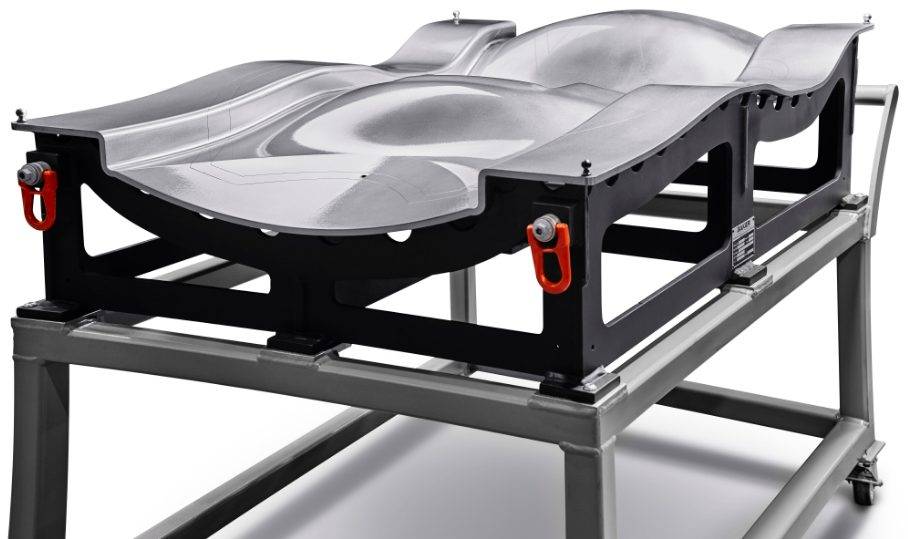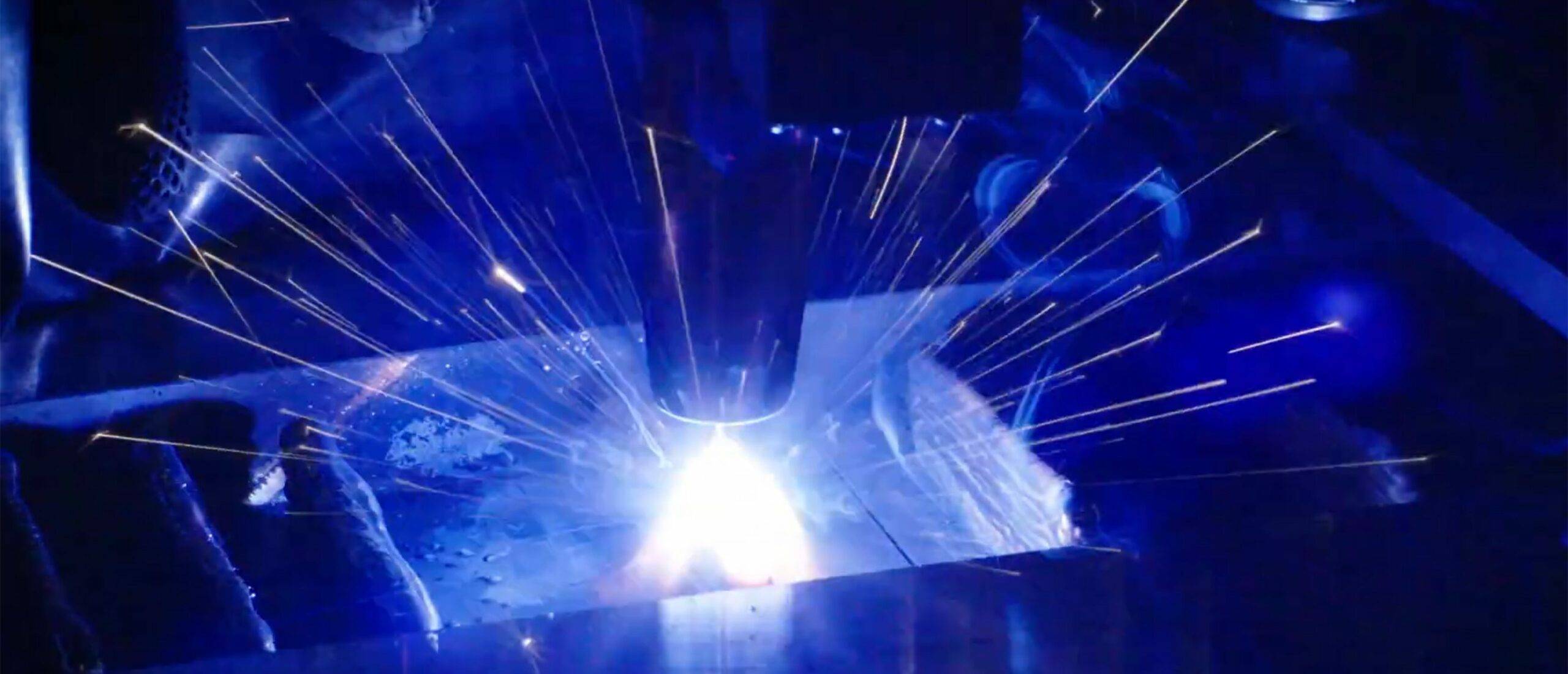WAAM’s ability to produce near-net-shape parts without tooling, molds, or furnaces reduces production time.
Wire-arc additive manufacturing (WAAM) is a method of 3D-printing large metal parts by combining robotics and arc welding. As with powder bed AM, parts are built one layer at a time.
Instead of melting powder, though, WAAM involves melting wire that is usually 1 to 2 mm in diameter. The wire serves as both the feedstock and the electrode that strikes an arc between itself and the part, which is built on a metal plate. Heat from the electrical discharge generates molten beads of metal that meld with one another. A sequence of beads forms a layer, and the layers stack up to form the part.
CAD software directs 360-degree movement of a robot arm or gantry system to deposit the beads. The omnidirectional capability supplies the multiple degrees of freedom needed to build large, unique shapes with complex internal features that would be difficult, time-prohibitive, or impossible to machine.
Almost Unlimited
Mark Douglass, business development manager of Lincoln Electric Additive Solutions (LEAS), Euclid, Ohio, explained that during WAAM the wire typically is perpendicular to the build plane, making the process insensitive to the direction the torch is traveling. The arc melts the wire from any angle, and the material flows straight down.
“The heat source can be manipulated by a 6-axis industrial robot, and a 2-axis positioner manipulates the part for a significant amount of build flexibility,” he added.
The only limitation on the size of WAAM-built components is imposed by the size of the equipment used. Since builds typically occur in the open air, the deposition robot can be paired with a moving pedestal, which facilitates the printing of tall parts, or a track system to add length.
“The technology scales well,” said Andrzej Nycz, a senior R&D staff member at Oak Ridge National Laboratory (ORNL) in Tennessee, which collaborates with Lincoln Electric on the development of large-scale WAAM technologies. “Theoretically, there is no upper limit to the mass of a component it can build. And part size can increase without the cost of the hardware going up exponentially. Work space can be doubled without doubling equipment cost.”
Mark Noakes, also an ORNL senior R&D staff member, said the lab has focused on additively manufacturing large components—some structural parts but mostly molds and stamping dies for the automotive, appliance, and aerospace industries.
“We have built a 7-ft.-long, 400-lb. part and a 500-lb. propeller that was nearly 4 ft. in diameter. Before the end of 2020, we expect to at least double those weights and dimensions,” said Noakes.
Parts for the electrical and maritime industries, prototypes, and one-off components are being produced in ORNL’s 2-m-dia. by 2-m-high WAAM system, which uses three robots that simultaneously coordinate wire deposition to increase the build rate.
“There is nothing magic about a three-robot system,” Noakes noted. “We chose three because it created a complex scenario. Three [presents] enough coordination issues that the research to solve them will give us the framework needed to use any number of robots in the future. That number could be 10 or 20 or more.”

Rapid Material Deposition
The build rate with current WAAM technology is between 5 and 15 lbs. per hour per printhead. The rate will increase, according to Nycz. “Our goals within the next two years are to deposit 25 or 30 lbs. of wire per hour using a single robot and 100 lbs. of wire per hour using a multirobot system.”
Because the WAAM process produces near-net-shape components, less material needs to be removed during postprocessing. “The finishing time is much less than when machining a part from a solid billet,” said Noakes. “You take away much less material, and that can save hours or days of production time.”
Feature resolution, he added, is generally inversely proportional to part size and build rate. “When you try to build faster, you use larger beads. The larger beads speed production but require more finishing to get a smooth surface.”
Mix of Materials
Wire used during WAAM can be tailored to specific needs. A mix of metals might be chosen to lower material costs or add strength to a wear area.
“For example,” said LEAS’ Douglass, “a part might have a tough steel inner core surrounded by a small layer of a harder—and likely more expensive—alloy or exotic material.”
Most industrial alloys are available in wire form today, and more are being introduced. Noakes said ORNL started out working with mild steel wire but is looking into an array of stainless steels, aluminum, aluminum-nickel, bronze, and exotic materials.

Also being developed is hybrid equipment for producing large parts that features both wire deposition and machining capabilities. And advances are under way to automate the current CAD-to-part software to reduce the required skill level of operators.
Lastly, a goal of improving WAAM technology, said Nycz, is reshoring lost production jobs. “A lot of tooling is imported today. WAAM has the capability to produce cost-competitive tooling and bring some of that market back to the U.S.”


